Lungworm in dogs
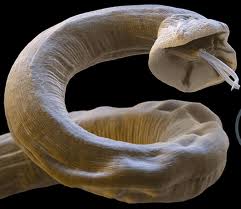 LUNGWORMS IN DOGS
LUNGWORMS IN DOGS
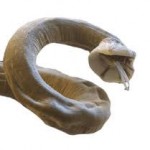
There are many different types of lungworm that infect dogs in Europe and the U. K.
The lungworm Angiostrongylus vasorum (also known as French Heartworm) is now a nationwide problem in dogs in the U.K with 25% of vets report seeing a suspected case. The adult worms live in the heart and major blood vessels supplying the lungs. This causes a multitude of problems for infected dogs and if the infection is not treated, it can often be fatal.
There is a second type of lungworm known as Oslerus osleri. Adult worms create nodules in the windpipe of the animal and lay eggs. The larvae that hatch cause reactions in the airways as they crawl around in the bronchi and tiny airways, some of which can be obstructed by the worm in the airways. Complications can lead to more serious problems such as shortness of breath (dyspnoea), bronchitis, emphysema, fluid build-up in the lungs, and pneumonia.
There are many different types of lungworm found in all species around the world. In this article we are only focussing on the above two worms. Read more about other dangerous worms
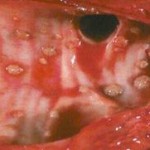
Signs of lungworm in dogs are not severe unless there are many larvae living in the airways. With minor infections, owners may not see signs at all. Dogs that have been previously infected with lungworms may have a degree of immunity to the infection and may be able to fight off a re-infection if there are not too many lungworms absorbed.
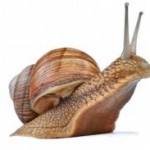
The lungworm parasite is carried and spread by by slugs and snails, which carry the larvae of the parasite. Snails become infected whey they eat the eggs or the larvae of the lungworms from dog feces. Although most dogs won’t purposefully eat slugs or snails, the problem arises when dogs accidentally eat them when rummaging through undergrowth or leaves, eat grass, drinking from puddles or outdoor water bowls, or pick them up when they chew their toys when the snails or slugs are crawling on the toys.

The larvae then penetrate the intestinal wall and into the veins draining blood from the guts. Larvae migrate out the bloodstream into the lungs in the case of Oslerus osleri. The lungworm larvae then grow inside the lungs of the dogs and mature into adult larvae in the airways. The eggs of the adult larvae hatch in the airways. These eggs are coughed up and then ingested back into the stomach and then into feces.
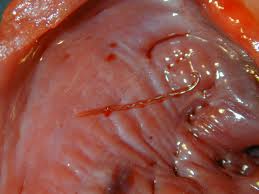
With Angiostrongylus vasorum, adults live in the heart and the main blood vessels around the heart. Eggs are laid in the circulation, hatch and the larvae migrate into the lungs from there. The larvae mature in the airways and are coughed up by the dogs , swallowed and pass out in the feces, infecting snails and slugs. Adults of both sexes are found in the right side of the heart and the pulmonary arterial circulation, and mate to produce eggs, which hatch quickly. First-stage larvae (L1) are carried to the pulmonary capillary bed, penetrate into the alveoli and are carried to the pharynx, swallowed, and pass out in the faeces.
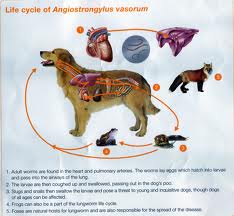
The lungworms damage the airways or lung tissue by inciting an inflammatory reaction inside the tissue – the body attempts to rid itself of the parasites by drawing white blood cells in and also releasing toxic chemicals in the area of the parasite. This unfortunately damages the body’s own tissues at the same time. Ultimately, the parasites survives and reproduce in the respiratory tissues. This can cause breathing problems and pneumonia.
Lungworms can cause several problems, including lung disease as well as other problems like poor blood clotting, problems with the nervous system, abdominal distension (bloating ) and pain. Haemorrhages in the lungs, liver, intestine, eyes and spinal cord are seen most commonly but can occur anywhere in the body. Pathology is caused by both the adult worms, eggs and larvae.
Cardio-respiratory signs are often seen. Chronic, coughing, exercise intolerance, difficulty breathing, and rapid breathing in young dogs is due to blood vessels being blocked by adults, eggs and larvae.
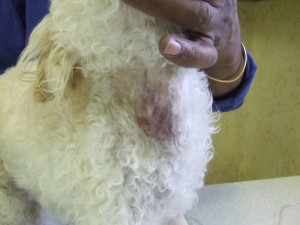
The parasite also causes coagulopathies – problems with blood clotting. Haematomas and prolonged bleeding are as a result of low platelet counts and where clotting factors V and VIII are decreased due to them binding to antigen – antibody complexes. Hypochromic anaemia is another symptom, also used in diagnosis and is due to the parasite interfering with haemoglobin synthesis.
Angiostrongylus vasorum also causes neurological damage. These present as ataxia, paresis, loss of vision, behavioural changes and seizures. All these symptoms are as a direct result of haemorrhages in the brain, spine and larger nerves.
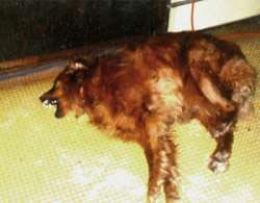
Dogs of all ages and breeds can become infected with lungworm, however, dogs under the age of two seem to be more commonly affected. Dogs can’t pass the disease directly from dog to dog. Dogs known to eat slugs and snails should also be considered high risk.

Foxes can also become infected with the lungworm, and have been implicated in the spread of the parasite across the country. Lungworms are more commonly seen in Wales and the south of the U.K., but are spreading throughout the U.K. Global warming, change in vector seasonal population dynamics and movements of animal populations to and from countries may be playing a role in the recent spread of these parasites.
SYMPTOMS OF LUNGWORM INFECTION
Lungworm infections can result in a number of different signs which may easily be confused with other illnesses. There are some dogs which don’t initially show outward signs of lungworm infection. If you are concerned your veterinary surgeon can perform tests which may help detect if your dog is infected with the parasite.
- Breathing problems such as coughing and tiring easily
- Bleeding such as excessive bleeding from minor wounds, bleeding into the eye and nosebleeds. This is due to a reduction in the clotting ability of the blood.
- Anaemia
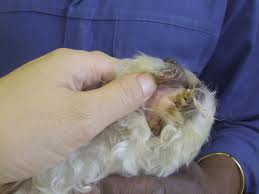
- General sickness such as weight loss, poor appetite, vomiting and diarrhoea
- Changes in behaviour such as lethargy and depression
- Seizures and in -coordination
- Paralysis or inability to walk
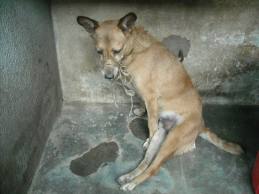
- coughing, difficulty breathing and wheezing,
- limb swelling
- abdominal distension
- bloody stool,
- bruising
- fever, lethargy and anorexia
DIAGNOSIS OF LUNGWORM INFECTIONS
Diagnosis is made from a combination of clinical signs and tests. Tests to check if a dog has a Lungworm infection include:
- Physical examination (lung auscultation) and history
- Chest X-rays. Imaging can show lung lesions in the peripheral lobes.
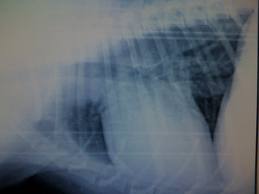
- Fecal examination for eggs and larvae – the Baerman technique is a special technique used by laboratories to seperate the eggs of these worms out from the eggs of other worms. Faecal examination using the Baerman technique can be unreliable, as egg output is irregular and the pre patent period of the parasite is relatively long. Multiple samples help reduce the risk of a false negative but should not be relied upon.
- Complete blood count (CBC). Blood tests, showing eosinophillia, poor clotting ability and speed as well as hypochromic anemia all point towards a diagnosis
- Examination of fluid from lungs – bronchoalveolar lavage, brushing of the nodules for Oslerus osleri.
- Post mortem examination can also reveal the worm. Again, lung lesions (looking for mottled lungs) are seen.
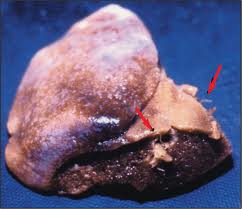
Adult lungworm in the pulmonary artery inside the lung on post mortem (autopsy) Subcutaneous haematomas and enlarged blood vessels are common. Another sign is endocarditis of the right side of the heart and the tricuspid valve.
TREATMENT OF LUNGWORMS

Several deworming agents are effective in killing the lungworm parasites, including
imadcloprid/moxidectin, fenbendazole, milbemycin ioxime, and ivermectin. Not all of these wormrs will kill the paraistes everywhere in the body, for example. Once your vet has diagnosed which type of lungworm your dog is suffering with, he or she will prescribe the most appropriate medication at the correct dosage for your pet. In severe cases, other medications, such as bronchodilators and diuretics, may be needed as well. Unfortunately, sometimes the disease can be fatal even with treatment. Moxidectin is the only licensed product in the UK that treats and prevent all lungworms.
PREVENTION OF LUNGWORM INFECTIONS
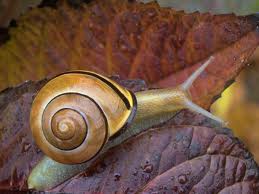
- Slugs and snails are more prevalent in spring and autumn so be vigilant at these times with what your pet eats and drinks and also with your lungworm protection.
- Make sure you use your monthly preventative drops on the back of the neck. The only licensed drug in the U.K. is moxidectin. This can only be purchased at your vet or with a veterinary prescription. other tick and flea drops will not necessarily prevent or treat Lungworm.
- Avoid using outdoor drinking or water bowls as these attract slugs and snails.
- Pick up any toys and chews from the garden and don’t leave them outside.
REFERENCES
1. http://www.lungworm.co.uk/what-is-this-lungworm/
2. http://www.dfordog.co.uk/article-be-lungworm-aware.html
3. http://www.petmd.com/dog/conditions/respiratory/c_dg_lungworms#.UKUwNuRFX4s
4. http://www.bluecross.org.uk/1752-99849/dog-owners-are-you-lungworm-aware-.html
5. http://en.wikipedia.org/wiki/Lungworm
6.
http://www.48forcesupport.com/LinkClick.aspx?fileticket=yQ27N%2FVBREM%3D&tabid=110&mid=509
7. http://www.parasitesandvectors.com/content/3/1/62
8. http://en.wikipedia.org/wiki/Angiostrongylus_vasorum
9. http://www.academia.edu/941804/Angiostrongylus_vasorum_infection_in_dogs_continuing_spread_and_developments_in_diagnosis_and_treatment


Leave a Reply
You must be logged in to post a comment.